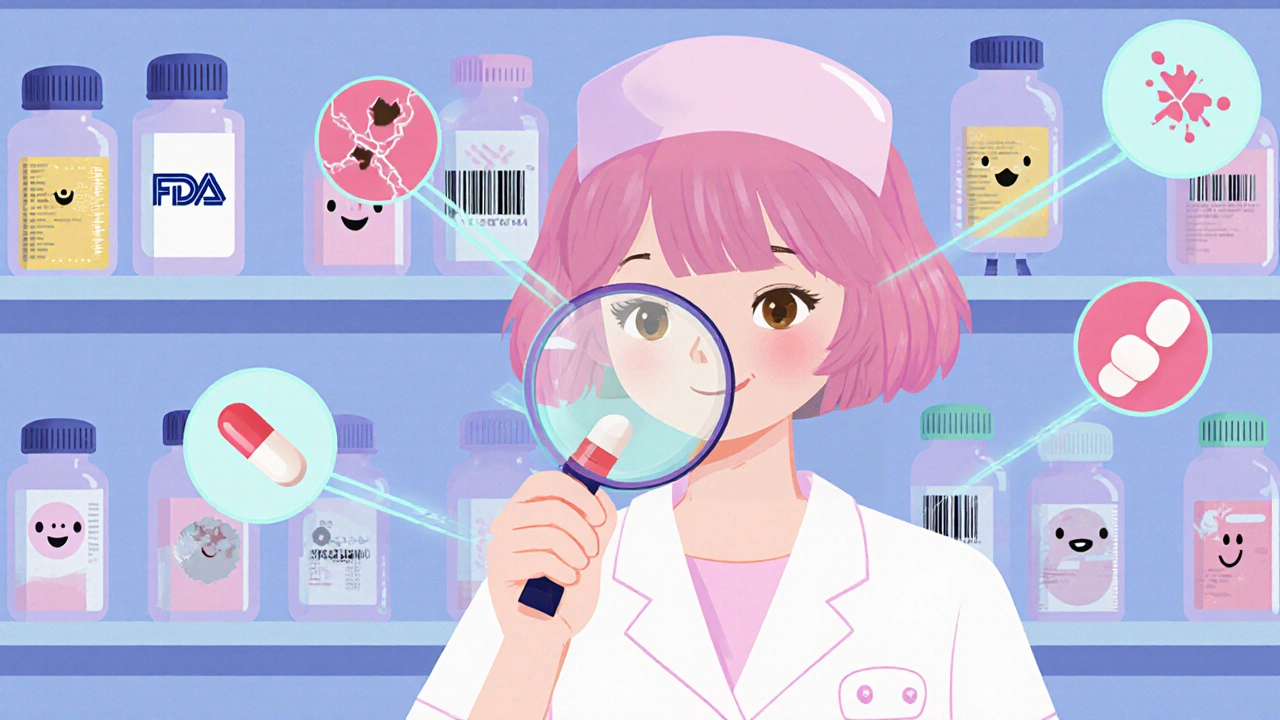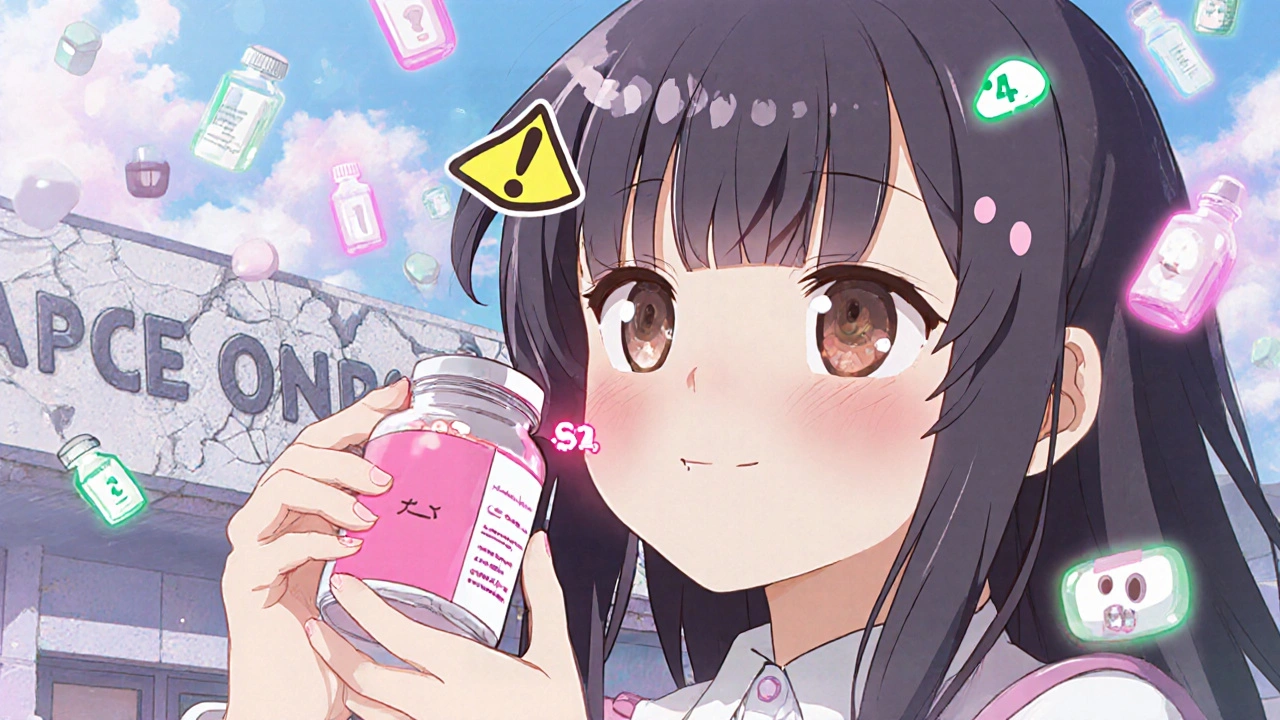Every year, hundreds of thousands of people around the world take pills they think are real medicine-only to find out too late they were poisoned. Counterfeit drugs aren’t just fake labels or cheap knockoffs. They’re dangerous. Some contain no active ingredient at all. Others have deadly doses of fentanyl, rat poison, or industrial chemicals. In 2023, Interpol seized over $21 million in fake medications from online sellers. And the problem is getting worse. If you’ve ever bought pills online, gotten a refill that looked different, or saved money by choosing a suspiciously cheap pharmacy, you’re at risk.
Price That’s Too Good to Be True
If a medication costs 50% or more below the regular retail price, it’s almost certainly fake. Legitimate pharmacies rarely discount prescription drugs more than 20%. Why? Because drug manufacturers set strict pricing rules, and pharmacies can’t legally undercut them by huge margins. But counterfeiters don’t follow rules. They buy bulk chemicals online, mix them in basements, and sell them for pennies. A bottle of Viagra that normally costs $80 might be offered for $15 online. That’s not a deal-it’s a death sentence. The DEA’s 2024 Operation Press Your Luck found that 100% of counterfeit opioid pills sold at steep discounts contained lethal levels of fentanyl. One pill can kill.Packaging That Doesn’t Match
Look closely at the box, blister pack, or bottle. Real pharmaceutical companies spend millions on packaging design. Every font, color, logo, and barcode is precisely controlled. Counterfeiters copy what they can see-but they miss the tiny details. Check for:- Spelling errors (63% of fake drugs have them)
- Mismatched batch or lot numbers
- Expiry dates that look smudged or pasted on
- Blurry printing or pixelated logos when you zoom in
- Missing tamper-evident seals or seals that look resealed
Tablets That Look or Feel Wrong
Real pills are manufactured to exact standards. They don’t vary in size, weight, or texture by more than a few percent. Fake ones? They’re inconsistent. Look for:- Cracks, chips, or uneven edges
- Too soft or too crumbly
- Unusual color-paler, darker, or streaked
- Odd smell-chemical, bitter, or metallic
- Tablets that dissolve in water within 2 minutes (real ones should take 20-30 minutes)

Online Pharmacies Without a License
There are over 35,000 illegal online pharmacies operating today. Only 6,214 are verified by the National Association of Boards of Pharmacy (NABP) and carry the .pharmacy domain. If a website doesn’t have that suffix, don’t buy from it. Even if it looks professional, has fake testimonials, or offers “free shipping,” it’s likely a scam. The DEA says 92% of counterfeit drug sales happen through websites that don’t require a prescription. That’s a huge red flag. No legitimate pharmacy sells controlled substances without a valid script.Unexpected Side Effects or No Effect
If you’ve been taking a medication for years and suddenly feel dizzy, nauseous, or unusually tired-or if your condition gets worse-it could be fake. In 2024, pharmacists reported that 73% of counterfeit drugs were discovered because patients complained the medicine wasn’t working. One woman in Texas took what she thought was Ozempic for weight loss. Instead, it was a cheap sugar pill with no active ingredient. Another man in Australia took fake insulin and went into diabetic shock. Real medications work predictably. If yours doesn’t, stop taking it and get it tested.How to Verify Your Medication
You don’t need a lab to spot a fake. Use this simple six-step check:- Check the seal. Tamper-evident packaging should show clear signs if opened. If the cap twists off easily or the shrink wrap looks resealed, walk away.
- Verify the NDC code. Find the National Drug Code (10-digit number) on the box. Type it into the FDA’s National Drug Code Directory. If it doesn’t show up, it’s fake.
- Call the manufacturer. Use the phone number on the official website (not the one on the bottle). Ask if the lot number is valid. Pfizer says 37% of counterfeit lot numbers don’t exist in their system.
- Compare to images. Go to the drugmaker’s website. Most top brands like Pfizer, Novo Nordisk, and Janssen have side-by-side photos of real vs. fake pills.
- Do a solubility test. Place a tablet in a glass of water. Let it sit for 30 minutes with gentle stirring. Real pills should barely break down. Fake ones dissolve fast.
- Report it. If something’s off, file a report with FDA MedWatch within 24 hours. Your report helps stop others from getting hurt.

What’s Changing in the Fight Against Fake Drugs
Counterfeiters are getting smarter. AI now generates fake packaging that fools 68% of people at first glance. Holograms look real. Barcodes scan correctly. But they still can’t replicate the microscopic details. The FDA’s new PharmMark system, launching in 2026, will embed invisible luminescent nanoparticles into every controlled substance. Only special UV lights can see them. By 2027, blockchain tracking will be used by 75% of global drug suppliers, making it nearly impossible to slip fake meds into the supply chain. But until then, you’re the last line of defense. The most dangerous counterfeits right now target high-cost drugs: Ozempic, insulin, heart medications, and erectile dysfunction pills. These cost over $1,000 a month-and that’s what makes them worth faking.What to Do If You Suspect a Fake
Stop taking it. Don’t flush it or throw it away. Bring it to your pharmacist. They can send it for testing. If you’re in Australia, contact the Therapeutic Goods Administration (TGA). In the U.S., report it to the FDA. If you’ve already taken it and feel sick, go to the ER immediately. Fake drugs don’t just fail to work-they can kill.Can I trust online pharmacies that offer free shipping and discounts?
No. Legitimate pharmacies don’t offer deep discounts or free shipping on prescription drugs because of strict pricing regulations. If a website offers pills at 60% off or ships without a prescription, it’s almost certainly illegal. Only use pharmacies with the .pharmacy domain, verified by the NABP. Over 35,000 fake online pharmacies are active today-most look professional but are deadly.
How do I know if my pill looks different from last time?
Compare the pill’s size, shape, color, and imprint code to the manufacturer’s official images online. If it’s a different shade, has a different logo, or feels softer or harder, it could be fake. Even small differences matter-like a slightly raised lettering or a missing dot on the tablet. Pharmacists report that 87% of counterfeit cases were caught because patients noticed a change from their previous refill.
Are fake pills only a problem in developing countries?
No. While up to 30% of drugs in some low-income countries are fake, even developed nations like the U.S., Australia, and the UK are affected. The WHO estimates 500,000 deaths annually from fake malaria and pneumonia drugs in Africa-but counterfeit heart meds, insulin, and cancer drugs are found regularly in Western pharmacies. Online sales make this a global problem. A fake pill bought in Melbourne could be made in China and shipped from a server in Canada.
Can a pharmacist tell if a pill is fake?
Yes. Pharmacists are trained to spot counterfeit drugs using visual checks, lot number verification, and manufacturer databases. Since the DEA launched its Pharmacist Verification Certification Program in 2023, participating pharmacies have reduced counterfeit dispensing by 63%. If you’re unsure, ask your pharmacist to check the lot number or compare your pills to the manufacturer’s reference images. They’re there to protect you.
What should I do if I took a fake pill?
Stop taking it immediately. If you feel unwell-dizziness, nausea, chest pain, low blood sugar, or sudden weakness-go to the emergency room. Bring the pill bottle with you. Report the incident to your country’s health authority: the FDA in the U.S., the TGA in Australia, or the EMA in Europe. Even if you feel fine, get tested. Some fake drugs cause delayed damage, especially to the liver or kidneys.
Are generic drugs more likely to be counterfeit?
Not necessarily. Generic drugs are manufactured under the same strict rules as brand-name drugs. The risk comes from buying them from unverified sources, not from the generic status itself. The most common counterfeit drugs are high-value ones like Ozempic, Viagra, and insulin-regardless of brand or generic label. Always verify the source, even for generics.


